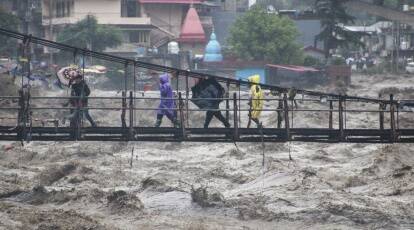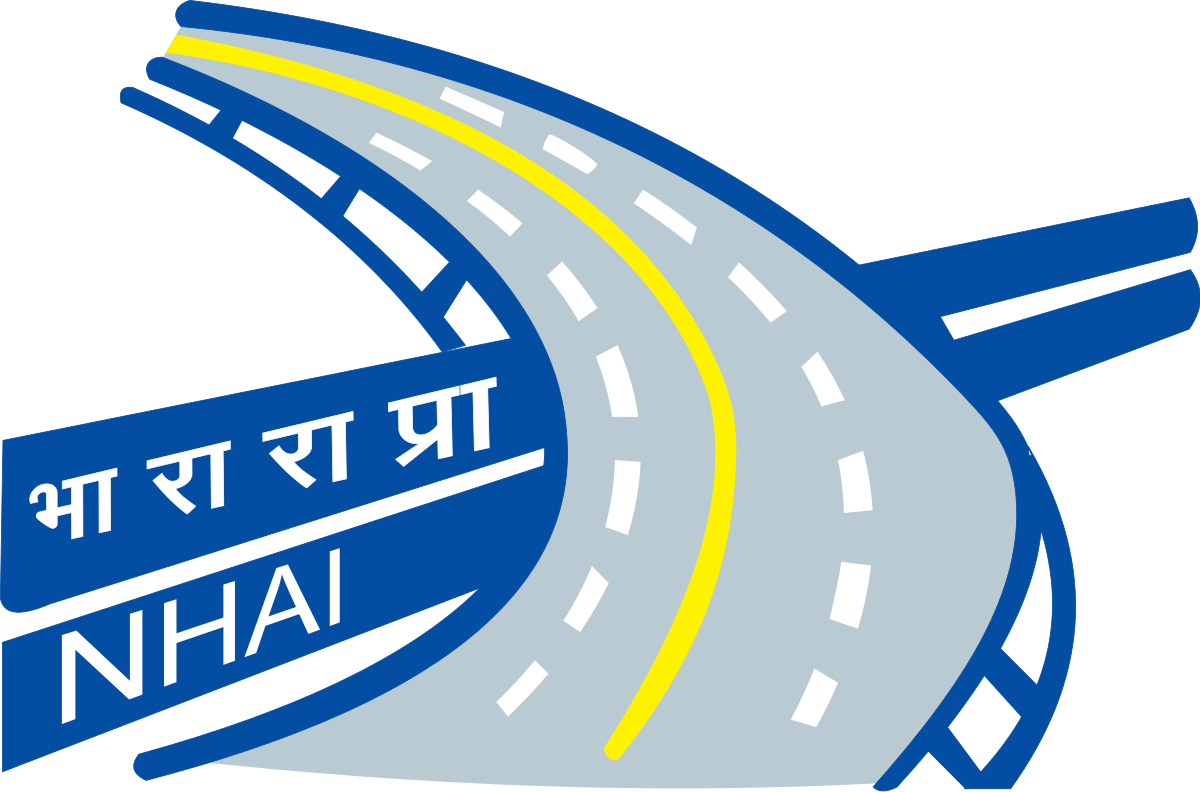Rain fury in Himachal: Massive destruction of road infrastructure, multiple landslides, highways blocked; NHAI likely to deploy more machinery – Details inside

Rain fury in Himachal: Massive destruction of road infrastructure, multiple landslides, highways blocked; NHAI likely to deploy more machinery – Details inside
Himachal Pradesh is grappling with the aftermath of relentless downpours that have resulted in widespread destruction of roads and infrastructure. The daunting task ahead for the state government involves restoring over 1,239 roads, including critical national highways such as Chandigarh-Manali and Kalka-Shimla.
The heavy rainfall has wreaked havoc, triggering landslides, blocking vital roadways, causing power outages, and damaging bridges. Himachal Pradesh has incurred a significant loss of Rs 780 crore due to the incessant downpour, and the damage to roads, bridges, and water supply schemes is expected to further escalate in the coming days.
The government now faces the challenging responsibility of assessing the extent of the damage and formulating comprehensive plans for restoration. The restoration efforts will require significant resources, time, and coordination among various departments and agencies involved in infrastructure rehabilitation.
Immediate attention is being given to clearing blocked roads, addressing power disruptions, and ensuring the availability of clean water. Repairing damaged bridges and infrastructure will be a priority to reinstate connectivity across the affected regions.
The government’s immediate focus on rescuing and evacuating stranded people and tourists from affected areas like Manali, Lahaul and Spiti, and Shimla is crucial for ensuring their safety and well-being. When heavy rainfall causes devastation and leads to casualties, timely and efficient rescue operations are of paramount importance.
During such situations, the government typically activates disaster response teams, including local authorities, police, and emergency services, to carry out rescue and evacuation operations. Here are some steps that might be taken:
- Identifying stranded individuals: The government, with the help of local authorities and community members, will identify areas where people are stranded and in need of immediate assistance. This may involve aerial surveys, communication with local communities, and coordination with rescue teams on the ground.
- Evacuation planning: The government will formulate evacuation plans to safely transport stranded people and tourists from affected areas to safer locations. This may involve setting up temporary shelters, arranging transportation, and providing medical aid to needy people.
- Rescue operations: Trained rescue teams, including the National Disaster Response Force (NDRF) and state emergency services, will be deployed to carry out rescue operations. These teams will use appropriate equipment and techniques to rescue people from flooded areas or other dangerous situations.
- Coordination with other agencies: The government will coordinate with various agencies, including the Indian Air Force, Army, and local administration, to ensure effective rescue and evacuation operations. This may involve utilizing helicopters or other means of transportation to reach remote or inaccessible areas.
- Communication and information dissemination: The government will establish communication channels to provide updates, instructions, and helpline numbers to affected individuals and their families. This helps in keeping people informed and facilitates coordination during rescue operations.
- Rehabilitation and support: After the immediate rescue and evacuation phase, the government will focus on providing necessary support and assistance to the affected individuals. This may include medical aid, temporary shelter, food, clean water, and other essential supplies.
- Post-evacuation assessments: Once the rescue and evacuation operations are complete, the government will assess the situation to determine the extent of damage and plan for long-term rehabilitation and reconstruction efforts.
It’s essential to recognize that rescue and evacuation operations require collaboration between multiple agencies, proper coordination, and effective communication. The government will prioritize the safety and well-being of stranded individuals and tourists during these challenging circumstances. Rockslides and blockages on highways are common occurrences during periods of heavy rainfall and landslides. The safety of travellers is of utmost importance, and authorities are working diligently to clear the blocked sections.
Clearing a 150-meter-wide rockslide can be a complex and time-consuming task. Here are some steps that might be taken to address the situation:
- Assessment of the rockslide: Officials and geotechnical experts will assess the extent of the rockslide and evaluate the stability of the area. This assessment helps in devising an appropriate plan for removal.
- Clearing debris: Specialized equipment and workforce will be deployed to remove the rocks and debris blocking the national highway. This process requires caution to ensure the safety of the personnel involved.
- Stabilization measures: After the debris is cleared, stabilization measures may be implemented to mitigate the risk of further rockslides in the area. This can involve slope stabilization techniques such as retaining walls, rock bolting, or netting to secure the slope.
- Repair and restoration: Once the highway is cleared, repair work will commence to restore the damaged sections and ensure the road is safe for travel. This may include repairing or reconstructing damaged road surfaces, bridges, or other infrastructure.
- Continuous monitoring: After the highway is reopened, authorities will continue to monitor the area for any signs of instability or potential rockslide risks. Regular inspections and maintenance activities will be carried out to ensure the safety of travellers.
It’s important to note that clearing a major rockslide requires significant resources, expertise, and time. The authorities are trying to expedite the process and restore connectivity as quickly as possible. During this period, alternative routes may be provided, and travellers are advised to stay updated on road conditions and follow official instructions for their safety.Despite ongoing efforts by officials, 1,239 roads in Himachal Pradesh remain inaccessible for the third consecutive day. The focus of these efforts is on restoring road connectivity in key areas such as Manali, Kasol, and Parvati Valley.
In light of the situation, the government of Himachal Pradesh has appealed to the Union government for assistance in prioritizing the restoration of blocked national highways. Recognizing the critical importance of these highways for transportation and the overall well-being of the region, the state government seeks the support and resources necessary to expedite the process.
Efficient collaboration between the state and central governments is crucial for addressing the challenges posed by the blocked national highways. By pooling their efforts and resources, both entities can work towards restoring vital road connectivity.
The restoration work involves clearing debris, repairing damaged sections, and ensuring the safety of the road infrastructure. As the situation evolves, regular updates from the government will help keep the public informed about the progress of the restoration efforts and any alternative routes or measures that can be taken in the interim.
Efforts are being made to expedite the restoration process, with the target of opening the roads within the next 48 hours. However, officials have acknowledged the significant level of destruction and the time required to clear the boulders from the highways. The speed of the restoration work is also contingent upon the prevailing weather conditions, as adverse weather can impede progress.
In such circumstances, close coordination between the state government, NHAI, and other relevant authorities is crucial to efficiently deploy machinery and resources. Additionally, continuous monitoring and assessment of the situation are important to adapt the restoration efforts as needed.

Given the magnitude of the damage caused by heavy rainfall and the subsequent challenges faced in road clearance, it is understandable that restoration efforts may take time. The authorities need to prioritize the safety of personnel involved in the restoration work while striving to reopen the highways as quickly as possible.
Regular updates from the government and responsible agencies will help keep the public informed about the progress of restoration work and any alternate routes or measures that can be taken in the interim. Airlifting stranded individuals is a common practice during such situations to ensure their safety and provide timely assistance. Here’s how the process might unfold:
- Request for assistance: The state government formally requests the Indian Air Force to provide helicopters to airlift stranded tourists. This request highlights the situation’s urgency and the need for immediate evacuation.
- Assessment and coordination: Upon receiving the request, the Indian Air Force assesses the feasibility of airlifting operations in the affected areas. They coordinate with the state government and other relevant authorities to gather necessary information and plan the airlift operations.
- Prioritization and planning: Based on the assessment, a priority list is created to determine the order in which stranded tourists will be airlifted. Factors such as medical emergencies, vulnerable individuals, and their stay in the affected areas may be considered during this process.
- Airlifting operations: The Indian Air Force deploys helicopters to designated locations to conduct airlift operations. Trained pilots and ground staff carry out the evacuation with utmost care and ensure the safe transfer of stranded tourists to nearby safe locations.
- Coordinated efforts: The airlifting operations involve close coordination between the Indian Air Force, state government, local administration, and other relevant agencies. Effective communication and collaboration are essential to ensure smooth operations and the timely rescue of stranded individuals.
It’s important to note that airlifting operations are subject to various factors, such as weather conditions, helicopter availability, and the number of stranded tourists. The prioritization of individuals for airlifting is based on the assessment of their immediate needs and vulnerabilities.
The government’s decision to airlift stranded tourists from Chandratal Lake camps is aimed at ensuring their safety and providing them with necessary assistance. Regular updates from the government and concerned agencies will help keep the public informed about the progress of these evacuation efforts.The suspension of bus services on 1416 routes by the Himachal Road Transport Corporation (HRTC) is necessary to ensure passengers’ safety due to road blockages on highways caused by inclement weather.
The increase in the death toll in Himachal Pradesh, reaching a total of 31, is indeed tragic. Additionally, neighbouring Uttarakhand, Uttar Pradesh, Punjab, and Rajasthan have also experienced the loss of life due to rain-related incidents. During such extreme weather conditions, the priority is to take all possible measures to ensure the safety of individuals and provide necessary assistance to those affected.
The state authorities and disaster management agencies are likely to be engaged in relief and recovery efforts. These efforts typically include search and rescue operations, providing medical assistance, assessing infrastructure damage, and supporting affected communities. The government will also collaborate with relevant agencies and organizations to expedite relief efforts and mitigate further risks.
It’s important for residents and travellers in the affected areas to stay updated with the latest information from local authorities, follow safety instructions, and take necessary precautions to avoid hazardous situations. The government will continue to work towards restoring normalcy, clearing road blockages, and assisting those affected by the heavy rainfall and its consequences.





